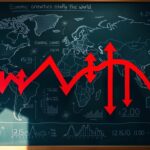Substandard Medicines: Understanding the $200B Global Health Crisis and How to Combat It
In the modern global health ecosystem, substandard and counterfeit medicines present an alarming challenge. With an estimated economic impact of over $200 billion annually, these compromised drugs endanger patient safety and undermine trust in healthcare systems worldwide. This article examines the crisis’s key dimensions: the differences between substandard and counterfeit products, the economic damage to healthcare systems, the clinical threats posed by poor-quality medications, and the statistical realities underpinning the crisis. It also discusses regulatory and technological solutions to combat fake medicines and outlines steps that healthcare professionals and consumers can take to protect themselves. By drawing on recent research and case studies, the article aims to provide stakeholders with a comprehensive understanding and actionable strategies to mitigate risk and ensure patient safety.
The crisis of substandard medicines is a persistent global problem affecting both developed and developing nations. Evidence from international health regulations and agencies like the World Health Organization indicates that counterfeit drugs contribute significantly to treatment failures, drug resistance, and adverse reactions. Beyond patient health, the economic repercussions affect supply chains and public sector expenditures. The following sections present a detailed analysis of the crisis through precise definitions, quantitative data, and qualitative insights.
Transitioning into the main body, we first define the core terms and highlight the fundamental differences between substandard and counterfeit products.
What Are Substandard and Counterfeit Medicines?
Substandard medicines are products that do not meet quality standards set by national or international pharmacopoeias. They may result from poor manufacturing practices, degradation during storage, or improper distribution. In contrast, counterfeit medicines are intentionally fraudulent products designed to mimic genuine drugs while lacking the proper active ingredients or dosage. This distinction is critical because substandard medications often result from negligence or logistics failures, whereas counterfeit drugs arise from deliberate criminal activity aimed at financial gain.
The key differences are that substandard drugs suffer from unintentional production deficiencies and are sometimes detected through quality control, while counterfeit products are designed to deceive and are often associated with organized crime. Their sophisticated methods can evade typical detection protocols, complicating regulatory enforcement worldwide.
How Do Substandard Medicines Differ From Falsified Drugs?
Substandard medicines typically arise from manufacturing lapses—incorrect ingredient concentrations or inadequate storage—that reduce a drug’s efficacy or safety. Falsified drugs, however, are intentionally misrepresented through forged documentation and packaging. Studies indicate that while substandard products may be common in under-regulated markets, falsified drugs appear more frequently in regions with weak patent protections and regulatory oversight. Counterfeiters even mimic holograms and serial numbers to produce convincing replicas, making rapid detection and market removal especially challenging.
What Are Common Types of Fake Medicines Worldwide?
A wide range of drugs falls under the category of fake medicines, including antibiotics, antimalarials, antiretrovirals, and vaccines. Counterfeits can be inert, contaminated, or contain incorrect active ingredients, sometimes posing lethal risks. Documented cases include counterfeit antibiotics increasing microbial resistance and falsified antimalarials leading to patient deaths in endemic regions. These medicines often circulate on online pharmacy platforms with minimal oversight, exposing consumers to significant danger.
The easy accessibility via online pharmacies has exacerbated the problem, allowing counterfeiters to spread their products across borders with limited detection. Although global surveillance systems exist, the rapid proliferation of fake medicines continues to outpace enforcement efforts. International cooperation and advanced analytical techniques are essential to curb this growing threat.
Why Are Substandard Medicines a Growing Global Concern?
Global supply chains have grown more complex, and the demand for affordable medicines has increased, sometimes compromising quality control. Globalization in manufacturing has made enforcing uniform regulatory standards difficult across regions. In many emerging markets, weak oversight leads to widespread distribution of substandard drugs, accelerating antimicrobial resistance and treatment failures. Moreover, robust criminal markets drive counterfeit production, as economic incentives favor low-cost production even at the expense of safety.
Socio-economic factors such as poverty, inadequate healthcare infrastructure, and weak governance further contribute to the crisis. In such settings, patients often rely on low-cost alternatives where the risk of encountering substandard or counterfeit medications is significantly higher, leading to compounded public health and economic consequences.
What Is the Economic Cost of Fake Medicines?
Counterfeit and substandard medicines cost the global market over $200 billion each year. This figure includes direct losses to healthcare systems from ineffective treatments and increased hospitalizations, as well as indirect costs related to lost productivity and reduced tax revenues. The counterfeit drug market adversely impacts legitimate pharmaceutical revenues, undermining incentives for research and development and skewing market dynamics.
How Does the $200 Billion Figure Reflect the Global Crisis?
The enormous $200 billion loss reflects not only the prevalence of substandard products but also the aggressive tactics of counterfeiters. When regulation is weak, patients and providers incur hidden costs—from misdiagnosis and prolonged treatments to adverse drug reactions. For countries with limited healthcare budgets, funds diverted to manage the fallout from fake medicines constrain investments in critical healthcare infrastructure.
Quantitative studies further reveal that economic damage is not evenly spread. Regions with weaker regulatory systems suffer disproportionately higher losses. Investments in advanced quality control tools and coordinated international regulatory efforts are essential for mitigating these long-term costs.
Which Regions Suffer the Most Economic Damage?
Under-resourced health systems in parts of Asia, Africa, and Latin America bear the brunt of the counterfeit medicine crisis. Weak regulatory frameworks and vulnerable supply chains enable the proliferation of fake drugs in these areas. In addition to direct healthcare costs, these regions face compounded financial challenges due to inefficiencies in healthcare delivery. Studies indicate that sub-Saharan Africa and Southeast Asia, in particular, experience significant economic losses as a result of counterfeit pharmaceuticals, further undermining public health outcomes.
The disproportionate impact in these regions limits economic growth and forces governments to allocate scarce resources to emergency healthcare, perpetuating a cycle of inefficiency and socio-economic instability.
How Do Counterfeit Drugs Affect Healthcare Systems and Markets?
Counterfeit drugs erode patient trust and force healthcare systems to divert resources from innovative treatments to tracking and eliminating fake drugs. Substandard medications lead to repeated interventions and longer treatment durations, increasing overall treatment costs and burdening insurance providers. Moreover, the presence of fake drugs damages the reputation of reputable pharmaceutical companies, often resulting in increased regulatory scrutiny and higher compliance costs. This economic feedback loop ultimately reduces patient access to effective therapies and hinders national responses to other public health emergencies.
What Are the Health Risks and Consequences of Substandard Medicines?
The risks associated with substandard and counterfeit medicines are severe. Patients may unknowingly use drugs that not only lack the active therapeutic agent but also contain harmful impurities or contaminants, leading to treatment failures, toxic side effects, or even death. Long-term exposure to such drugs can further contribute to chronic health conditions and increased drug resistance.
How Do Fake Medicines Endanger Patient Health?
Fake medicines endanger patients by delivering incorrect doses or completely lacking active ingredients. Numerous clinical studies report cases where patients receiving falsified treatments experienced worsened conditions. For example, reports from Southeast Asia have noted that patients using falsified antimalarials failed to clear infections, resulting in severe complications and higher mortality. In addition to these immediate risks, the presence of toxic contaminants such as heavy metals or microbial elements in counterfeit products can lead to unpredictable and dangerous side effects.
Delayed appropriate treatment is another major concern; patients who rely on fake medicines may postpone seeking effective care, thereby worsening their health outcomes. The cumulative impact can be devastating, often necessitating intensive medical intervention and prolonged hospitalization.
What Are the Long-Term Effects on Global Health Outcomes?
Long-term use of substandard medicines reduces the overall efficacy of treatment protocols and accelerates drug resistance, particularly in infectious diseases. As pathogens develop resistance due to inadequate dosing, standard therapies become less effective, complicating public health efforts to control epidemics. Additionally, the widespread distribution of fake drugs undermines confidence in official healthcare systems, driving patients toward unregulated alternatives—which further deepens health inequalities. Over time, these factors contribute to a cycle of ineffective treatment, increased chronic disease prevalence, and a greater overall burden on global healthcare resources.
How Do Substandard Drugs Contribute to Antimicrobial Resistance?
Antimicrobial resistance (AMR) is directly linked to substandard medicines that expose pathogens to sub-therapeutic drug levels. When drugs fail to achieve the necessary therapeutic concentration, bacteria and other pathogens may survive and develop resistant mutations. Studies have documented higher instances of resistant strains in regions where counterfeit and substandard antibiotics are prevalent. The emergence of AMR poses a global threat, as resistant pathogens can spread across borders and undermine decades of progress in antimicrobial therapy. Addressing the prevalence of substandard drugs is thus critical in the global fight against AMR.
What Do Current Statistics Reveal About Counterfeit Drugs?
Current data reveal that counterfeit drugs are alarmingly widespread, particularly in low- and middle-income countries. Reports suggest that up to 10% of all medicines in these regions may be substandard or falsified, with some therapeutic categories experiencing incidence rates as high as 30%. These statistics, derived from both governmental surveillance and independent research, highlight the urgent need for more robust and coordinated global quality control measures.
How Prevalent Are Fake Medicines in Different Countries?
International studies indicate that regions with less rigorous regulatory environments, such as parts of Africa, Southeast Asia, and Latin America, report significantly higher rates of substandard medicines than high-income regions like North America and Europe. Meta-analyses have estimated that counterfeit products can constitute nearly one-third of the pharmaceutical market in some low-income countries. These disparities emphasize the necessity of enhanced surveillance and enforcement mechanisms to protect vulnerable populations.
Economic conditions also play a role—areas where patients cannot afford high-quality medications create markets for cheaper, lower-quality alternatives that counterfeiters readily exploit. The rise of online pharmacies further exacerbates the risk, as these platforms often lack sufficient regulatory oversight.
What Are the Most Affected Drug Categories?
Counterfeit drugs are most prevalent in therapeutic classes with high market demand. Antimicrobials, antimalarials, antiretrovirals, and vaccines are commonly counterfeited due to their critical role in public health. Additionally, painkillers and lifestyle drugs (e.g., erectile dysfunction medications) are frequent targets. Regulatory agencies report that the majority of falsified products belong to these high-consumption categories, meaning that large segments of the population are at risk. The complexity of replicating these drugs makes it challenging for standard quality control tests to reliably differentiate between genuine and counterfeit products.
How Reliable Are Reporting and Detection Methods?
Despite numerous analytical techniques like high-performance liquid chromatography and mass spectrometry, detecting counterfeit medications remains challenging. Reporting often relies on passive surveillance by healthcare providers and active monitoring by international agencies. Underreporting is still common due to low patient awareness and the clandestine nature of counterfeit operations. Although advanced technology platforms—such as blockchain for supply chain traceability and portable analytical devices—are showing promise, the reliability of these systems varies regionally. Uniform international standards and enhanced regulatory coordination are needed to improve data collection and enforcement.
What Solutions Exist to Combat Counterfeit Pharmaceuticals?
Addressing the crisis of counterfeit and substandard medicines requires a multi-pronged strategy involving regulatory, technological, educational, and collaborative initiatives. Effective solutions must include strict regulatory policies, advanced detection technologies, widespread public education on counterfeit risks, and robust international cooperation among governments, agencies, and industry stakeholders.
How Can Policy and Regulation Reduce Substandard Medicines?
Strengthening regulatory frameworks is crucial. Governments can implement more rigorous laws and set strict guidelines for manufacturing, distribution, and quality control. International health regulations provided by the World Health Organization and the Council of Europe offer a baseline standard that can be harmonized across borders to close loopholes exploited by counterfeiters. Regular audits and enhanced surveillance systems have proven effective in regions such as the European Union, where coordinated inspections and swift sanctions have led to measurable reductions in counterfeit drug circulation.
What Role Does Technology Play in Detecting Fake Drugs?
Technological innovation is key to combating counterfeit pharmaceuticals. Rapid, precise analytical instruments enable regulators to detect discrepancies in active ingredients. Blockchain technology is increasingly used to secure supply chains by recording every transaction in an immutable ledger, thus enhancing traceability. Mobile applications and portable devices also empower healthcare professionals and consumers alike, allowing for on-the-spot testing and quicker identification of suspect products. Pilot projects combining RFID tags with blockchain have shown marked improvements in detection speed and accountability.
How Can Public Awareness and Education Help?
Educating consumers about the dangers of fake medicines is vital. Public health campaigns that offer clear guidelines on verifying drug authenticity can empower patients to make informed purchasing decisions. Best practices include buying from certified online pharmacies or authorized drugstores and checking for proper certification seals and product details such as batch numbers and expiry dates. In addition, training healthcare professionals to recognize warning signs and report suspicious products can significantly reduce the spread of counterfeits. Increased public awareness directly correlates with a reduction in counterfeit circulation.
What Are Successful Global Initiatives and Partnerships?
Successful international initiatives, often led by the World Health Organization in collaboration with governments and pharmaceutical companies, include rapid alert systems and global surveillance networks. One notable example is the Global Surveillance and Monitoring System, which facilitates real-time information sharing among stakeholders. Such partnerships have not only reduced the circulation of fake medicines in certain regions but also strengthened global public health by creating networks of well-equipped professionals working together effectively.
A table below summarizes these key strategies:
How Can Healthcare Professionals and Consumers Protect Themselves?
Both healthcare professionals and consumers have important roles in mitigating the risks from substandard and counterfeit medicines. For healthcare providers, strict adherence to quality control protocols and routine verification of pharmaceutical supplies is essential. Additionally, they should report any suspicious products immediately to regulatory authorities. Consumers, meanwhile, should purchase medicines only from reputable sources and remain vigilant for any packaging inconsistencies or irregular pricing.
What Are Warning Signs of Substandard Medicines?
Warning signs include discrepancies in packaging such as blurred fonts, mismatched logos, or missing security elements. Changes in pill shape, color, or texture compared to previous purchases, as well as inconsistent pricing and unclear labeling (e.g., missing batch numbers or expiry dates), are red flags. Recognizing these indicators early on can help prevent adverse health outcomes and stop the circulation of fake products.
How Should Suspected Fake Medicines Be Reported?
If a counterfeit medicine is suspected, it is vital to report it immediately. Healthcare professionals should document any anomalies, retain samples if possible, and notify relevant pharmacovigilance centers. Consumers should contact local health departments or consumer protection agencies and discontinue use of the suspect product. Rapid reporting facilitates timely intervention and can help authorities take legal action against counterfeiters.
What Are Safe Purchasing Practices for Medicines?
Safe purchasing practices include buying medications exclusively from accredited pharmacies or verified online retailers. Consumers should check that products have proper certification and detailed packaging information, including batch numbers, expiry dates, and manufacturer details. Establishing a continuous relationship with a trusted pharmacy can further ensure consistency in quality and enable reliable tracking of any future discrepancies.
What Is the Role of Organizations Like GlobalMedWatch in Fighting This Crisis?
Organizations such as GlobalMedWatch serve as independent watchdogs by monitoring and exposing the circulation of counterfeit medicines. They conduct in-depth research to document the prevalence and impact of substandard products and advocate for international policy reforms. Acting as impartial sources of information, they support regulatory bodies and healthcare providers in making evidence-based decisions aimed at enhancing medicine safety standards globally.
How Does Independent Research Inform Policy Change?
Independent research by organizations like GlobalMedWatch offers objective, data-driven insights into the counterfeit drug crisis. Such studies—presented at international health conferences and in peer-reviewed journals—detail the methods used by counterfeiters and expose vulnerabilities within drug supply chains. This compelling evidence drives legislative reforms and encourages governments to adopt more robust regulatory frameworks, resulting in stricter quality control measures and improved verification systems.
What Educational Resources Are Available for Stakeholders?
GlobalMedWatch and similar organizations provide various educational resources, including white papers, webinars, and training modules geared toward healthcare professionals, policymakers, and the public. These resources cover topics such as identifying warning signs of fake medicines, understanding new detection technologies, and implementing best practices for safe pharmaceutical procurement. Regularly updated websites also offer real-time alerts and databases of counterfeit incidents, significantly contributing to a well-informed global healthcare community.
How Can Individuals Get Involved in Combating Fake Medicines?
Individuals can participate by staying informed about medication safety standards through community awareness programs and regulatory alerts. Reporting any suspicious products and engaging in discussions with healthcare providers about drug authenticity can further empower consumers to protect themselves and contribute to broader efforts to secure pharmaceutical supply chains.
Frequently Asked Questions
Q: What constitutes a substandard medicine compared to a counterfeit drug?
A: Substandard medicines fail to meet established quality standards due to manufacturing or storage issues, whereas counterfeit drugs are intentionally misrepresented products designed to mimic genuine medications, often containing harmful or incorrect ingredients.
Q: How significant is the economic impact of counterfeit medicines globally?
A: The global economic burden exceeds $200 billion annually, including direct healthcare costs from treatment failures and hospitalizations, as well as indirect losses in productivity and innovation.
Q: What should consumers look for as warning signs of fake medicines?
A: Key indicators include packaging anomalies (mismatched logos, unclear fonts), irregular pill appearance, inconsistent pricing, and discrepancies in product information like batch numbers and expiry dates.
Q: How effective are current technologies in detecting counterfeit drugs?
A: Although advanced analytical tools and blockchain-based verifications have improved detection, challenges persist due to increasingly sophisticated counterfeit methods. Continued international cooperation and technological innovations are vital for further improvements.
Q: How do organizations like GlobalMedWatch contribute to combating this crisis?
A: They perform independent research that guides policy reforms, offer educational resources, issue alerts, and empower healthcare professionals, consumers, and policymakers to prevent the distribution of substandard and fake medicines.
Q: What steps can healthcare professionals take to protect patients from counterfeit drugs?
A: They should rigorously verify pharmaceutical supplies, report suspicious findings, educate patients on safe purchasing practices, and remain informed about the latest detection technologies and regulatory updates.
Q: How can global partnerships help reduce the prevalence of substandard medicines?
A: Collaborations coordinated by bodies such as the World Health Organization enable sharing of intelligence, standardization of regulatory measures, and implementation of rapid alert systems that collectively reduce the spread and economic burden of counterfeit drugs.
Final Thoughts
Substandard and counterfeit medicines represent a complex global health crisis that endangers patient safety and undermines public health systems. The interplay between economic pressures, regulatory challenges, and technological advancements necessitates a multi-pronged approach. Effective mitigation requires coordinated efforts from policymakers, healthcare providers, and informed consumers, along with strong international cooperation and continuous innovation. Prioritizing patient safety through stringent regulations, improved detection methods, and comprehensive public education is essential to dismantle the counterfeit drug market and protect global health.









































































































